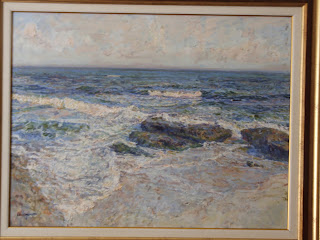Conventional wisdom in financial centres characterizes the welfare state as wasteful and inefficient, penalizing good hard-working people in order to subsidize those that would rather live on state largesse than work for a living. Most recently, rising levels of government debt have given the bond markets and the rating agencies reason to attack a number of Eurozone countries. All this would seem to support the conclusion that the days of the welfare state are doomed and are themselves guilty of this predicament. The social democratic elected governments of Spain, Greece and Portugal have chosen to follow the US and UK neo-liberal recipe, thus abandoning their raison d´etre.For more see this Social Europe blog - one of the best for social democratic thoughts in this difficult time.
In this context, the curious anomaly of the Nordics poses a riddle. How can these countries prosper with their high levels of taxation, wages and public expenditures? Why do they have the highest overall employment rates among the OECD countries? Some believe it must have something to do with the Protestant work ethic or cultural, ethnic and religious homogeneity. Others even say luck, or perhaps the fact they are small countries. In our view, none of these answers get at the essence.
We contend that the Nordics are successful because they are not welfare states in the distorted connotation of the term. The Nordics are highly efficient, rational and democratic systems that are run in accordance with the words of Abraham Lincoln: of the people, by the people, for the people. Two questions tell whether a democracy is a real or a fake democracy. First: who really runs the country? Second: who benefits from how it is run?
I missed the announcement of the EC rethink of Technical Assistance – following on The Arab Spring – and have the Open Europe blog to thank for drawing it to my attention. I will somment on it once I have had a proper chance to study it.
I don’t often write about novels I’m reading – but, as I’ve said before here, one of the nice things about living in this part of the world is the serendipity in the English-language books available in the increasing numbers of shops which offer such books (Sofia has about 6 such shops). Presumably they are remaindered – they are certainly no signs of the bestsellers of recent years. Indeed the prominent piles of Wordsworth Classics and Oxford University Press Classic Paperbacks offer the opposite temptation of reading the likes of Dostoevsky; Robert Louis Stevenson (eg his (extensive) travels), O’Henry or Virginia Wolf. And, every now and then, I come across authors new to me whose prose, characters and images shake me to the core. A few days ago I bought, on a hunch, a novel by an American (of Norwegian heritage) I had never heard of – Siri Hustvedt (just happens to be the wife of Paul Auster!). Its title is “What I loved” and I was so drawn to its language and characters that I devoured it in a day. Let an Amazon reviewer give a sense of its power -
What I Loved is an epic novel that covers 30 years of an artist's life, seen through the eyes of his best friend. The story is narrated by Leo Hertzberg, an art critic, as he tries to compile a book on the work of his closest friend Bill Weschler. The two friends and their families are entwined, with keys to each other's houses, their wives are friends, their boys play together. They live in tandem with each other, one family creating Art, the other observing. The book follows them for the majority of their adult lives, as Bill's artistic importance increases; they take lovers, people die, the world changes. 'What I Loved' is partly about Art as a method of representing the world. Tellingly, one of Leo's earlier books was called 'A Brief History of Seeing in Western Painting'. It also talks about memory and the way memory changes events, and about our personal perceptions of things compared to the actuality of them. It is a book of big ideas and Siri Hustvedt weaves them so skillfully into her narrative that they come back to you over the weeks and months after reading it. She never preaches, instead employs deft metaphors which haunt you long afterwards.Personally I was touched with this section "Lucille's complaints were banal - the familiar stuff of joyless intimacies. I've always thought that loves thrives on a certain kind of distance, that it requires an awed separateness to continue. Without that necessary remove, the physical minutiae of the other person grows ugly in its magnification" Wow!
She comfortably uses Art as a way of demonstrating the changes in our society, Bill particularly becomes a mirror that is held up to our world; when another artist, Teddy Giles takes a piece of Bill's work and destroys it for his own art there is a very real sense of the new world swallowing the old. Within, as you would expect over such a time scale, there are some moments of extreme tragedy that still upset me if I think about them now, but there are also examples of life affirming warmth.
One of her real skills is an ability to describe visual Art so vividly, and to convey their meaning, not only within the references of the books themes, but within the wider context of our society. This is a vast story filled with characters that you grow to love. Knowingly clever, but not prohibitively so. And is a hugely accomplished piece of Art in its own right.







